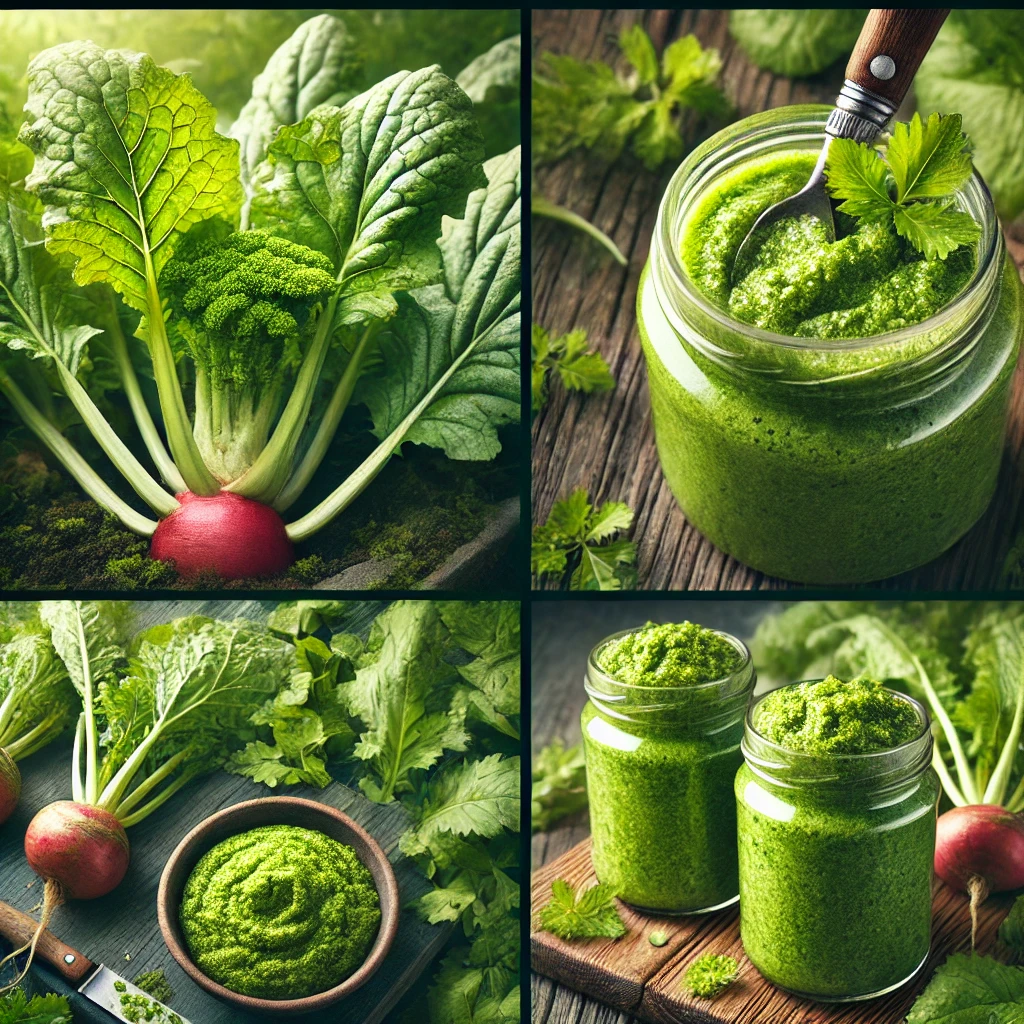Horseradish, known primarily for its sharp, pungent root, has an underappreciated part—the leaves—which are packed with health benefits and culinary possibilities. Often overlooked, horseradish leaves can enrich both wellness routines and everyday meals. Let’s explore the remarkable advantages these leaves offer and how to incorporate them into your diet.
Health Benefits of Horseradish Leaves
- Antioxidant Richness:
Horseradish leaves are high in vitamins C and A, which help fight free radicals, reduce the risk of chronic diseases, and promote radiant skin. - Mineral Content:
Packed with essential minerals like calcium, iron, and magnesium, these leaves help strengthen bones, improve blood circulation, and may prevent conditions like osteoporosis. - Anti-inflammatory Properties:
The anti-inflammatory compounds found in horseradish leaves can alleviate chronic inflammation-related conditions such as arthritis, while also lowering the risk of heart diseases. - Antibacterial Power:
Horseradish leaves contain antibacterial properties that help fight harmful pathogens, boosting the body’s defense mechanisms against infections. - Digestive Health:
Rich in fiber, these leaves support healthy digestion, encourage the growth of beneficial gut flora, and promote regular bowel movements. - Blood Pressure Regulation:
Their potassium content helps manage blood pressure, making them an excellent choice for supporting cardiovascular health and reducing hypertension risk. - Immune System Boost:
The high levels of vitamin C bolster the immune system, making the body more resilient to infections, including colds and flu. - Detoxification Aid:
Horseradish leaves act as a natural detoxifier, supporting liver function and promoting the elimination of toxins from the body. - Respiratory Relief:
The strong aroma and compounds in horseradish leaves can help clear sinuses and provide relief from respiratory conditions. - Weight Management:
Low in calories but rich in fiber, horseradish leaves can help keep you fuller for longer, supporting weight loss and healthy eating habits. - Skin Health:
The antioxidants and vitamins in horseradish leaves contribute to healthy, glowing skin and help reduce signs of aging.
Culinary Uses of Horseradish Leaves
Horseradish leaves are not only health-boosting but also a versatile ingredient that can elevate dishes with their unique flavor. Here’s how you can use them:
Fresh Culinary Applications
- Salads:
Add fresh horseradish leaves to salads for a spicy, peppery flavor similar to arugula or mustard greens. Their bold taste pairs well with milder greens and can transform a simple salad into a gourmet experience. - Meat and Vegetable Wraps:
Use larger leaves as wraps for grilled meats or veggies. The leaves add a zesty, unexpected kick, enhancing the flavor profile of your dish. - Green Smoothies:
For an added nutritional punch, toss horseradish leaves into green smoothies. Start with a small amount, as their strong flavor can overpower other greens.
Cooking Applications
- Soups and Stews:
When simmered, horseradish leaves add a mild, earthy spice to soups and stews, enriching the flavor without overwhelming the dish. - Stir-fries and Sautéed Dishes:
Finely chop horseradish leaves and add them to stir-fries for a zesty note that complements vegetables and meats, especially in Asian-inspired dishes. - Herbal Pesto:
Blend horseradish leaves with traditional pesto ingredients for a creative twist on the classic sauce. The leaves’ piquant flavor adds a unique dimension to pasta or sandwiches.
Preservation Techniques
- Blanching and Freezing:
To preserve horseradish leaves, blanch them briefly in boiling water, then plunge them into ice water to retain their vibrant color and nutrients. Afterward, squeeze out excess moisture, pack the leaves into airtight bags, and freeze them. This allows you to enjoy their health benefits and flavor year-round. - Drying for Seasonings:
Dry the leaves at low temperatures or in a dehydrator. Once crisp, crush them into a powder to use as a seasoning. This method offers a shelf-stable way to infuse your dishes with horseradish leaf flavor long after the harvest season.
Conclusion
Horseradish leaves are a powerhouse of nutrition, offering everything from antioxidant support to aiding in digestion and immune system strengthening. Their culinary potential is vast, adding spice and depth to both fresh and cooked dishes. By incorporating them into salads, smoothies, soups, and even pesto, or preserving them for later use, horseradish leaves can become a valuable and flavorful staple in your kitchen.
These leaves, often overshadowed by the plant’s famous root, deserve a place in the spotlight for their versatility and numerous health benefits. Whether enjoyed fresh or preserved, horseradish leaves are a unique and nutritious addition to any diet.
